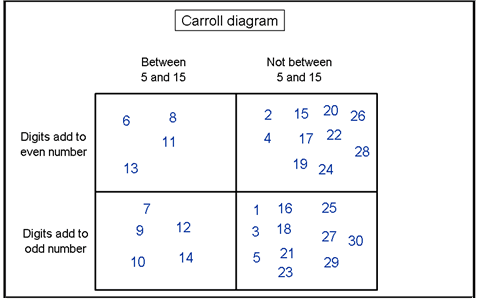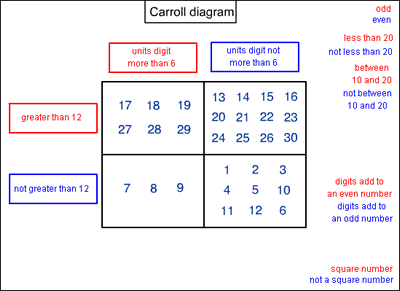Or search by topic
Number and algebra
Geometry and measure
Probability and statistics
Working mathematically
Advanced mathematics
For younger learners
Sorting the Numbers



- Problem
- Getting Started
- Student Solutions
- Teachers' Resources
Rowena from Christ Church Primary Schoolexplained how she filled in the first diagram:
I first looked at the two columns. Between $5$ and $15$ you don't use $5$ and $15$. So I started at $6$ for the right hand column, it went in the top row, $7$ in the bottom etc. When you count up it goes from bottom to top and back again until you reach a multiple of $10$, then it stays in the box you just put a number in. After I did this for $6$ up to $14$, I moved to the left hand column and repeated the same process for $1-5$ and $15-30$.Well explained, Rowena, thank you. Here is the picture Rowena sent of her completed diagram:

Thank you also to Cong from St Peter's Roman Catholic Primary School and Callum and Katie from Eynesbury CE(C) School for their solutions. Callum and Katie, you were so close in the second Carroll diagram, there was just one heading which you had slipped up on. Perhaps you can see why Cong's works? Here is Cong's completed diagram for the second challenge:

You may also like
Worms
Place this "worm" on the 100 square and find the total of the four squares it covers. Keeping its head in the same place, what other totals can you make?
Which Scripts?
There are six numbers written in five different scripts. Can you sort out which is which?
Highest and Lowest
Put operations signs between the numbers 3 4 5 6 to make the highest possible number and lowest possible number.

